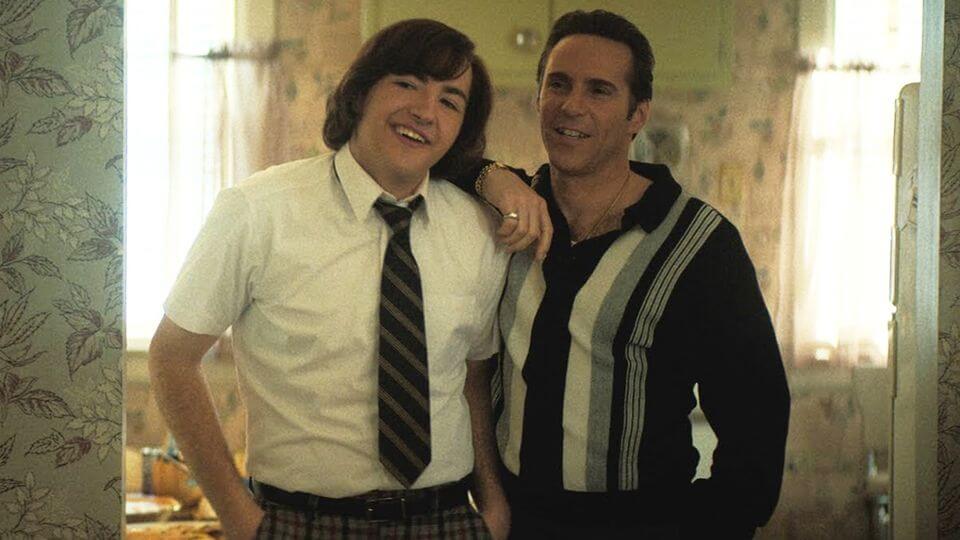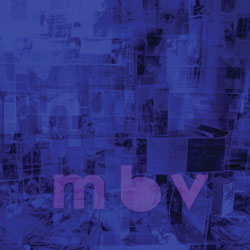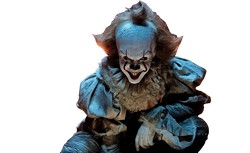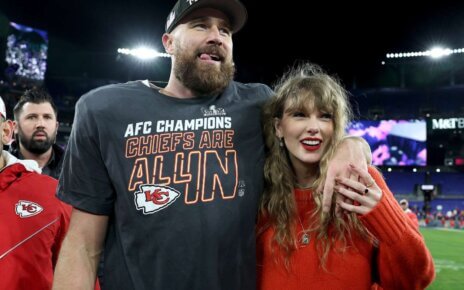Tony Soprano. Silvio Dante. Paulie Walnuts. Christopher Moltisanti. Junior Soprano. Anyone who has seen the iconic early 2000s HBO show The Sopranos is instantly familiar with these names. And starting Oct. 1, fans of the wildly successful and iconic show were able to see the origin story of these characters, along with stories of new characters added to this cinematic universe.
The Many Saints of Newark premiered in theaters and launched on streaming service HBO Max on the first of this month, and it serves as a prequel to The Sopranos.
Although all of the characters that were followed in the original run of the show are featured in this film, the real star of the show is Dickie Moltisanti (whose last name translates to “many saints”—hence the name of the film): the father of Christopher Moltisanti. Dickie was mentioned in The Sopranos, but was somewhat of a mythic hero, who was built up in everyone’s minds.
Alessandro Nivola plays Dickie Moltisanti, and does a great job showing the duality of this character. The audience is given scenes where Dickie is friendly and warm, a true family man, but also sees those where he is violently angry and is truly evil; which is very reminiscent of the character of Tony Soprano.
Dickie is young Tony’s hero and serves as a sort of mentor to the teenage Tony. The audience can even see how some of Dickie’s thoughts become Tony’s in a scene where Dickie is attempting to give Tony a stolen stereo. He says to Tony, “You take this stereo, while at the same time telling yourself this is the last time you’ll ever steal something.” Although he is not the prime example of who someone should want to be when they grow up, Dickie is a sort of father figure to Tony; the only one who young Tony can go to, as he has a derelict father and an emotionally manipulative mother.
Another new character the audience gets introduced to is Harold McBrayer, played by Leslie Odom Jr. McBrayer is a “numbers runner” for Dickie, which basically means he “takes care of” people for Dickie. In the film, he eventually ventures off from the Moltisanti crew to start his own criminal operation. His character and storyline is an especially important one, as McBrayer is the first black main character featured in The Sopranos franchise.
And as mentioned previously, the audience also gets to see the younger versions of multiple characters who starred in the original run of the show. Michael Gandolfini gives an outstanding performance as the teenage version of Tony, the role his father, James Gandolfini, inhabited in The Sopranos. Young Tony has more of a sensitive side to him, is more educationally motivated, and wants to go to college and become a professional football player. He even states at one point in the film that he never wants to take part in the way his father, uncle, and Dickie make a living.
An additional great performance comes from Vera Farmiga, who plays Tony’s mother, Livia. Farmiga does a fantastic job of showing the moodiness and selfishness of Livia Soprano, and the effect that her miserable demeanor has on her children and family. Corey Stoll plays Uncle Junior, who, much like Livia, is very much the same character in this film as in The Sopranos. Junior is the sidekick, the little brother, who is not taken as seriously as his brother Johnny. He is often picked on by the other members of the crime family, and he is seeking to prove himself, which leads to a dire situation toward the end of the film. As described before, the audience gets to see the younger versions of most of the beloved characters from the show, with John Magaro as Silvio Dante, Bill Magnussen as Paulie Walnuts, and Samson Moeakiola as Salvatore Bonpensiero.
This film also heavily features the events of the Newark Riots in 1967. The Newark Riots of 1967 started on July 12, when two police officers brutally beat an African-American cab driver after an unwarranted arrest.
Newark had already been a site of unrest, with it being controlled by a small group of white politicians while the town is majority black, resulting in a social and political disconnect. The actions of the police officers on this innocent cab driver set off a protest the next day, outside of the police precinct, which turned violent and resulted in riots for the days following.
Esquire writes, “From July 12 until July 17, 1967, police and protestor battles in the streets, as is depicted in The Many Saints of Newark. 26 people were killed and over 700 were injured, the majority of them Black residents of the city.” These events shape the characters and their world view. McBrayer is radicalized and wants to do more to help his community (albeit in a criminal manner) and leaves the Moltisanti crime family. The Soprano family moves out of Newark due to the riots and into the suburbs, which again shapes young Tony and made him the person he became in the show, someone who is balancing the malaise and banality of domestic suburban life and the brutality of the criminal life he leads when we leave off in The Sopranos.
As it stands, The Many Saints of Newark does an outstanding job of showing the motivations and origins of the characters that we were first introduced to in The Sopranos. There are certain comedic references and jabs here and there that those who have watched and loved The Sopranos will appreciate, but the film is also able to stand on its own for those who are just now being introduced to these characters.
The film seems to set up for a potential sequel, as it ends on a shot of young Tony while the theme song of the show begins to play; Christopher Moltisanti, who narrates the beginning and end of the film, explains: “That’s the guy, my Uncle Tony, the guy I went to hell for.”




